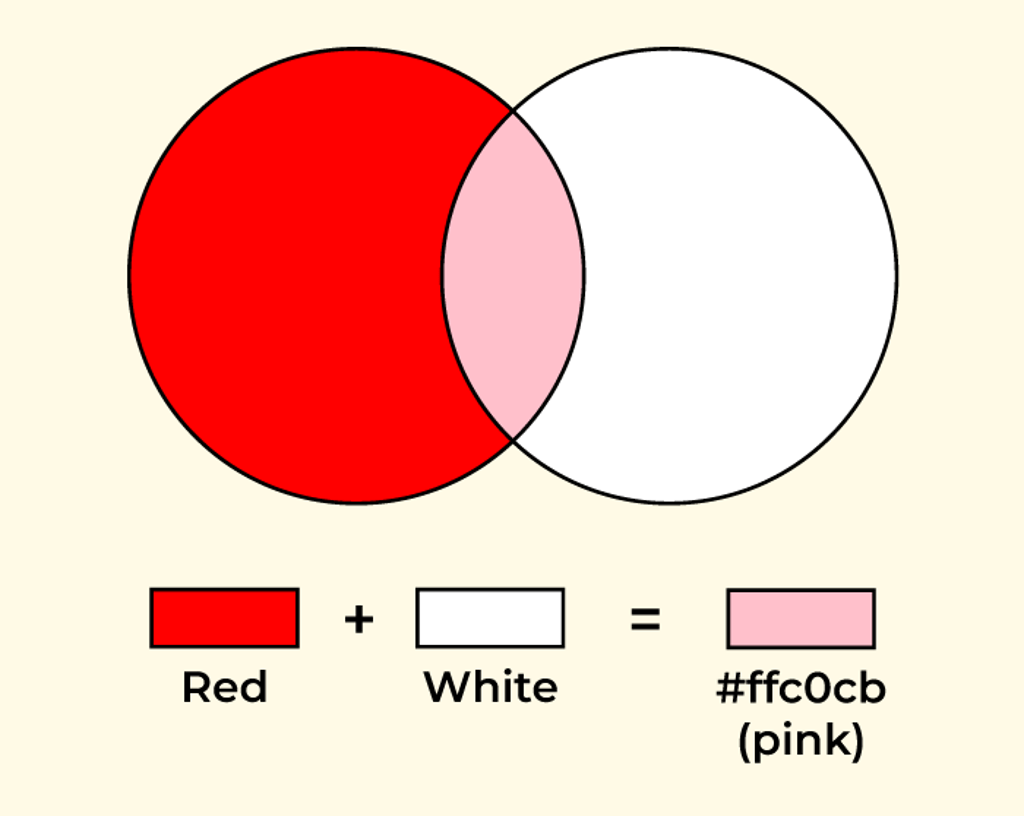When it comes to color mixing, the combination of red and white is a fascinating topic that often sparks curiosity among artists, designers, and hobbyists alike. Understanding what colors result from mixing red and white can enhance your creative projects and deepen your appreciation for color theory. This article delves into the exciting world of color blending, specifically focusing on the captivating relationship between red and white.
Colors play a pivotal role in our daily lives, influencing our emotions, perceptions, and even our decisions. The color red, often associated with passion, energy, and love, pairs intriguingly with the purity and simplicity of white. When these two colors meet on the palette or in design, they create a beautiful harmony that can evoke various moods and themes. This article will explore what does red and white make, providing insights into color theory and practical applications.
Whether you're an artist looking to expand your palette, a designer aiming for the perfect color scheme, or simply curious about color mixing, this guide will provide all the information you need. From the basic principles of color blending to examples of how this combination is used in art and design, we will uncover the magic that happens when red and white come together.
What Color is Made When You Mix Red and White?
The primary question that arises when discussing what does red and white make is: what color do they create? When red and white are mixed, the result is a lighter shade of red called pink. Pink is often associated with love, tenderness, and warmth, making it a popular choice in various contexts, from fashion to home decor.
Why is Pink Associated with Femininity?
Pink's association with femininity has historical roots. In the early 20th century, pink was considered a color for boys, while blue was deemed more appropriate for girls. However, this perception changed over time, and by the mid-20th century, pink became closely linked to femininity. This cultural shift reflects broader societal changes and influences how we perceive color today.
How Can You Create Different Shades of Pink?
When mixing red and white, varying amounts of each color can produce different shades of pink. Here are some tips for creating a range of pink hues:
- For a light pastel pink, use a larger proportion of white to red.
- To achieve a deeper, more vibrant pink, increase the amount of red.
- Experiment with adding small amounts of other colors, such as yellow or blue, to create unique shades of pink.
What is the Psychological Impact of Pink?
Pink, as a result of mixing red and white, carries various psychological effects. It is often used in marketing and design to evoke feelings of calmness, romance, and compassion. Understanding these associations can enhance your projects and help you communicate the desired emotions through color.
Where is Pink Commonly Used?
Pink is versatile and can be seen in various contexts, including:
- Fashion and clothing, where it often signifies softness and delicacy.
- Interior design, where it can create a warm and inviting atmosphere.
- Branding and marketing, especially for products aimed at a younger audience.
Can You Mix Pink with Other Colors?
Absolutely! Pink can be combined with a variety of colors to create stunning visual effects. Here are some popular combinations:
- Pink and green: This combination brings about a fresh, lively feel.
- Pink and gold: This pairing creates a luxurious and elegant look.
- Pink and gray: This mix offers a modern and sophisticated aesthetic.
What Does Red and White Make in Art and Design?
In the realm of art and design, understanding what does red and white make is crucial for creating visually appealing compositions. Artists and designers often use pink strategically to evoke specific emotions and themes in their work.
How Do Artists Use Pink?
Artists have utilized pink in various styles and movements throughout history. For instance, Impressionist painters often used pink to capture the soft glow of sunlight. In contemporary art, pink is frequently employed to challenge traditional gender norms and explore themes of identity and culture.
What is a Famous Example of Pink in Art?
A notable example of pink in art is the work of artist Henri Matisse, who famously used vibrant colors, including pink, to evoke emotion and create depth in his paintings. His piece “The Dance” showcases how pink can create harmony within a colorful composition.
Conclusion: The Beauty of Mixing Red and White
In conclusion, the combination of red and white yields the delightful color pink, a hue filled with meaning and emotional resonance. Whether you are an artist, designer, or simply a color enthusiast, understanding what does red and white make enriches your appreciation of color theory and its applications. By experimenting with different shades of pink and exploring its psychological effects, you can harness the power of color in your creative endeavors.
You Might Also Like
Unveiling The Mystique: Understanding Black Cat Personality TraitsExploring The Depths Of Solitude: 1 Is The Loneliest Number
Unveiling The Mystery: Fred Sanford's Wife's Name
Exploring The Enchanting World Of The Monsters University Cast
Unwrap The Magic Of Victoria's Secret Christmas: A Festive Experience
Article Recommendations
- Adriana Lima 90s
- Juan Soto Girlfriend
- Statewins
- Solar Eclipse Meme
- Taylor Dayne Relationships
- Zac Posen P Diddy
- Charly Arnolt Husband
- Kathleen Kennedy Net Worth
- Matthew Settle
- David Muir New Wife


